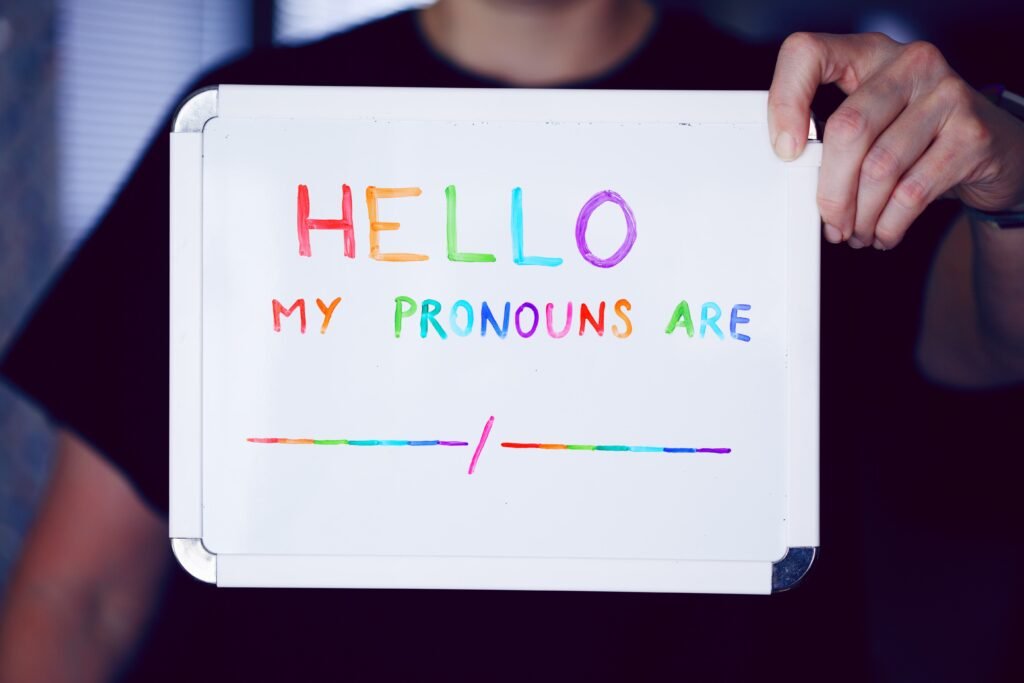
You might not even notice how often gender appears in day-to-day communication. Titles, pronouns, masculine words for general reference, greetings like “ladies and gentlemen” or “boys and girls” are all gendered. These references serve as reminders of gender and gender inequality. And that’s not to mention that they discriminate against people who don’t identify themselves as male or female.
What Is Gender-Inclusive Language?
Using gender-inclusive language means using neutral references that don’t marginalize or discriminate against people based on gender. It should be used in any communicative situation — formal and informal, public and private, written and oral.
Why Does Gender-Inclusive Language Matter?
Gender is not only a grammatical category. It’s also a social construct that shapes our attitudes. It carries roles and attributes that are linked to being male or female. This binary grouping is alienating. The effects of gender-exclusive language are subtle yet far-reaching. They influence the way we think about the male or female categories, reinforcing stereotypes and bias. Thus, by avoiding gender references, we can promote gender equality and help to fight discrimination against particular gender identities.
8 Practices to Promote Gender Inclusivity
Although English is not the most gendered language, it still has some gender references that should be avoided whenever possible. Here are the best practices to make your speech and writing gender inclusive.
- Use “they” as a singular pronoun
Use “they,” “them,” “their,” and “themselves” as alternatives to masculine or feminine singular pronouns. It’s a standard recommended by most style manuals like APA, MLA, and Chicago. So don’t forget to observe it when you’re working on your academic papers.
Using gender-neutral language might be challenging at first. Therefore, if you have a high-stakes assignment to write, you might want to use a make my essay service. It’s the easiest way to get an original essay that is also free from discriminatory language.
Less inclusive: Contact an admission representative, he will provide you with program information.
More inclusive: Contact an admission representative, they will provide you with program information.
- Make nouns and pronouns plural
The use of masculine nouns and pronouns for general references fails to acknowledge the contribution women make in social and professional areas. An easy way to avoid them is to use plural forms.
Less inclusive: Every student should submit his essay on Friday.
More inclusive: All students should submit their essays on Friday.
- Omit pronouns
Paraphrasing a sentence to omit gendered pronouns is a way to make your speech or writing gender-neutral. However, you should use this alternative with caution to avoid being impersonal.
Less inclusive: A writer should edit a copy before he submits it.
More inclusive: A writer should edit a copy before submitting it.
- Use pairing
Pairing is the use of both masculine and feminine nouns and pronouns instead of a masculine form alone. Yet, be careful not to overuse it as pairing might be distracting for readers.
Less inclusive: A person might change his opinion
More inclusive: A person might change his or her (his/her) opinion.
- Substitute the generic masculine with the passive voice
Use the passive voice as a substitute for generic masculine references. Note that this technique won’t work in certain writing styles. It might make texts less personal and dynamic.
Less inclusive: Each employee should complete his task by the end of the month.
More inclusive: The task should be completed by each employee by the end of the month.
- Use gender-neutral job titles
Most job titles are neutral in English. However, there are a few gendered titles that don’t sound inclusive. It’s easy to replace them with neutral alternatives:
- policeman → police officer
- chairman → chairperson
- spokesman → spokesperson
- mailman → mail carrier
- businessman → businessperson
- congressman → congressional representative
- fireman → firefighter
There’s also no need to add gender to neutral job titles:
- female doctor → doctor
- male nurse → nurse
- actress → actor
- cleaning lady → cleaner
- steward → flight attendant
- Replace unnecessarily gendered terms
Not only job titles can be gendered. Some nouns emphasize gender without any particular need. These are mostly words that include “man.” Try to spot and replace them with neutral alternatives:
- man → person
- mankind → people, humanity
- common man → average person
- manpower → staffing, workforce
- freshman → first-year student
- man-made → artificial
- Ms, Mrs or Miss?
Personal titles like “Mrs.” and “Miss” can also be discriminatory. You can’t define women by their marital status or relationships with men. As a general rule, you should avoid addressing women as “Miss” or “Mrs.” and use neutral “Ms.” instead.
Besides, titles should apply to both men and women consistently. If you use full names, last names, or titles to refer to men, you should refer to women in the same way.
Less inclusive: Professor Brown and Jane will attend the meeting.
More inclusive: Professor Brown and Professor Miller will attend the meeting.
The Bottom Line
Word choice is a reflection of our worldview and attitudes. It shows what is considered a “norm” within society. By using gender-inclusive language, we can challenge stereotypical social structures associated with gender and gender roles. It can also help to raise awareness and promote gender equality everywhere — in the workplace, school, and everyday life.



